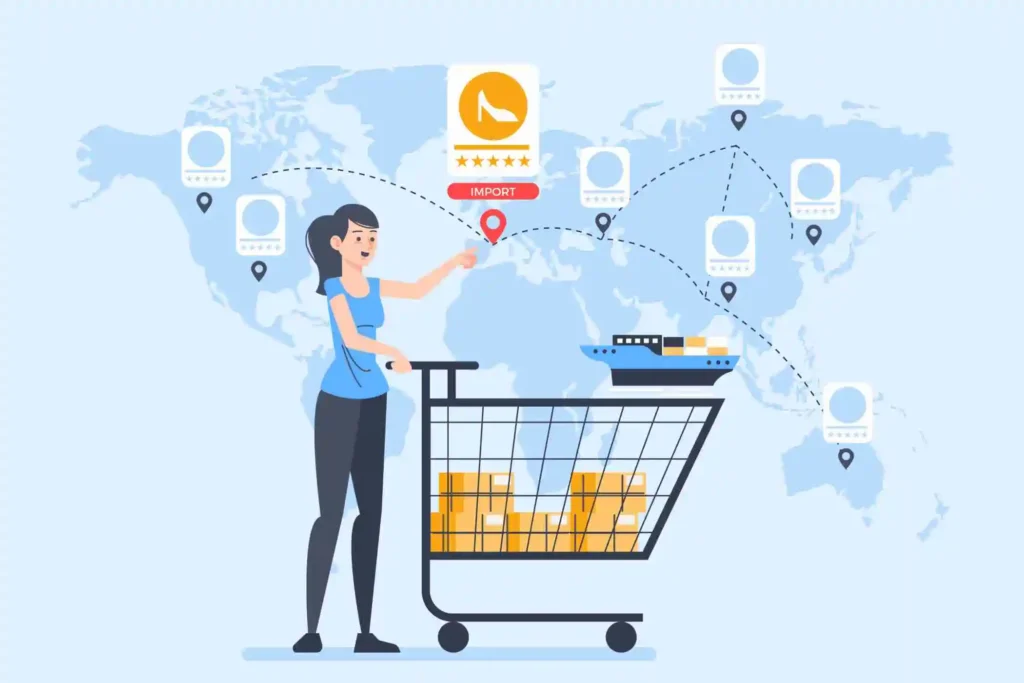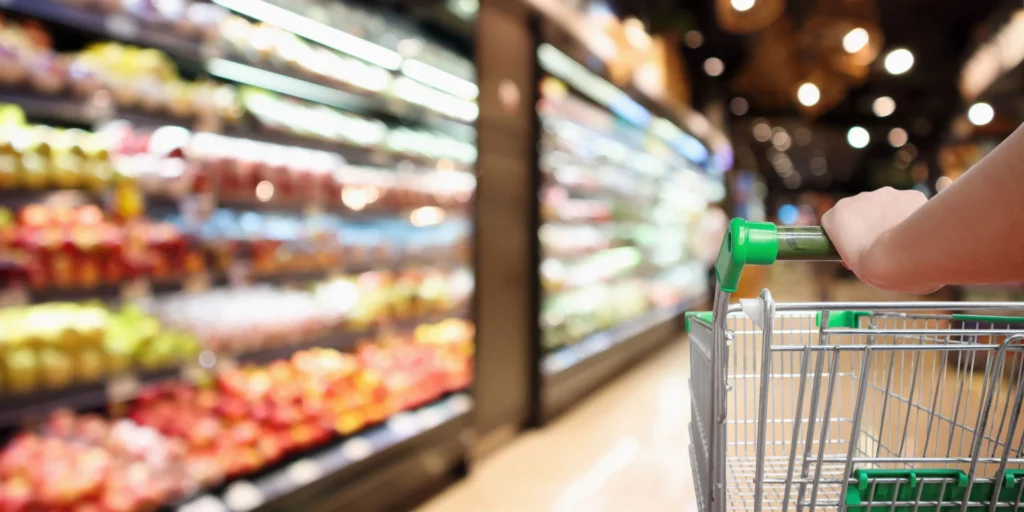In an era where technology permeates every facet of our lives, the supermarket experience is no exception. The Internet of Things (IoT) is transforming how we shop, making it smarter, more efficient, and incredibly personalized. This article delves into the role of IoT in supermarkets, exploring how it’s creating a more connected shopping experience.
Introduction to IoT in Supermarkets
Definition and Overview of IoT
The Internet of Things, or IoT, refers to a network of interconnected devices that communicate and share data with each other. These devices range from simple sensors to complex systems, all working together to automate and enhance various tasks. In the context of supermarkets, IoT integrates everything from smart shelves to self-checkout systems, reshaping the traditional shopping experience.
Importance of IoT in Modern Retail
IoT’s significance in retail cannot be overstated. It provides retailers with real-time insights into inventory levels, customer behavior, and operational efficiency. By leveraging IoT, supermarkets can enhance customer satisfaction, reduce operational costs, and improve supply chain management.
The Evolution of Supermarkets with IoT
Historical Perspective of Supermarkets
Supermarkets have come a long way since their inception in the early 20th century. From simple grocery stores to sprawling modern-day supermarkets, the evolution has been remarkable. Initially, these stores relied heavily on manual processes for inventory management and customer service.
Transformation through IoT Integration
The introduction of IoT has revolutionized supermarkets, bringing about a paradigm shift in operations. Smart technology now powers everything from inventory management to customer interactions. This transformation has not only enhanced efficiency but also created a more engaging and personalized shopping experience.
How IoT Enhances the Shopping Experience
Personalization and Customer Engagement
Imagine walking into a supermarket where the aisles seem to know exactly what you need. IoT makes this possible by enabling personalized recommendations and offers based on your shopping history and preferences. This level of personalization enhances customer engagement, making the shopping experience more enjoyable and efficient.
Real-time Inventory Management
Gone are the days of empty shelves and out-of-stock signs. IoT allows supermarkets to maintain real-time inventory management, ensuring that shelves are always stocked with the products customers need. Sensors and smart tags monitor stock levels and automatically reorder items when they run low, minimizing disruptions and ensuring a seamless shopping experience.
IoT-enabled Smart Shelves
Functionality of Smart Shelves
Smart shelves are equipped with sensors that monitor product levels and provide real-time data to store managers. These shelves can detect when an item is low in stock or if a product is misplaced, sending alerts for restocking or rearrangement.
Benefits to Retailers and Customers
For retailers, smart shelves mean better inventory management and reduced labor costs. For customers, they ensure product availability and more organized aisles, enhancing the overall shopping experience. It’s a win-win situation where efficiency meets convenience.
Self-checkout Systems and IoT
How IoT Revolutionizes Self-checkout
IoT has taken self-checkout systems to the next level. These systems now come with advanced features like biometric scanning, mobile payment integration, and real-time troubleshooting. This means shorter wait times, faster checkouts, and a more streamlined payment process.
Case Studies of Successful Implementations
Retail giants like Walmart and Amazon have successfully integrated IoT-powered self-checkout systems. These systems not only reduce queue times but also provide valuable data on customer buying patterns and preferences, helping these retailers optimize their operations further.
IoT in Supply Chain Management
Tracking and Monitoring Goods
IoT plays a crucial role in supply chain management by enabling the tracking and monitoring of goods from production to store shelves. This ensures that products are delivered on time, and any issues are identified and addressed promptly.
Improving Supply Chain Efficiency
With IoT, supermarkets can optimize their supply chain operations, reducing delays and minimizing waste. This leads to lower operational costs and more efficient logistics, ultimately benefiting both the retailer and the consumer.
Energy Management in Supermarkets with IoT
Smart Lighting and HVAC Systems
Energy consumption is a significant concern for supermarkets. IoT addresses this issue by integrating smart lighting and HVAC systems that adjust based on occupancy and weather conditions. This not only reduces energy consumption but also creates a more comfortable shopping environment.
Reducing Energy Consumption
By implementing IoT-based energy management systems, supermarkets can significantly cut down on their energy bills. These systems provide real-time data and insights, enabling more efficient use of resources and contributing to a greener environment.
Enhanced Security with IoT
Surveillance and Theft Prevention
IoT enhances security in supermarkets through advanced surveillance systems that include smart cameras and sensors. These systems can detect suspicious activities, alert security personnel, and even prevent theft before it occurs.
Ensuring Data Security
In addition to physical security, IoT also plays a crucial role in ensuring data security. With increasing concerns over customer data privacy, IoT systems are equipped with advanced encryption and security protocols to protect sensitive information from cyber threats.
Customer Insights and Data Analytics
Gathering Customer Behavior Data
IoT provides valuable insights into customer behavior by tracking their movements and interactions within the store. This data helps retailers understand shopping patterns and preferences, enabling them to tailor their offerings accordingly.
Using Data for Marketing Strategies
By analyzing the data collected from IoT devices, supermarkets can develop more effective marketing strategies. Personalized promotions, targeted advertisements, and product recommendations are just a few examples of how this data can be used to enhance customer engagement and drive sales.
IoT and Food Safety
Monitoring Freshness and Expiration Dates
IoT devices can monitor the freshness of perishable goods and track expiration dates, ensuring that products on the shelves are safe for consumption. This reduces food waste and helps maintain high standards of food safety.
Ensuring Compliance with Health Regulations
Supermarkets must comply with stringent health regulations, and IoT helps them meet these requirements by providing real-time monitoring and alerts for any issues. This ensures that products are stored and handled in accordance with health standards, protecting customers and reducing liability risks.
IoT in Personalized Shopping Experiences
Customized Promotions and Offers
IoT enables supermarkets to offer customized promotions and discounts based on individual shopping habits. This not only enhances the customer experience but also increases the likelihood of repeat purchases and customer loyalty.
Personalized Shopping Assistance
Imagine having a virtual shopping assistant that guides you through the store, suggests products based on your preferences, and helps you find the best deals. IoT makes this possible, providing a more personalized and convenient shopping experience.
Challenges in Implementing IoT in Supermarkets
Technical and Operational Challenges
Implementing IoT in supermarkets comes with its own set of challenges. These include the need for a robust IT infrastructure, integration with existing systems, and managing the high volume of data generated by IoT devices.
Privacy and Security Concerns
Privacy and security are major concerns when it comes to IoT. With the collection of vast amounts of customer data, supermarkets must ensure that this information is protected against unauthorized access and breaches, which requires stringent security measures and compliance with data protection regulations.
The Future of IoT in Supermarkets
Emerging Trends and Innovations
The future of IoT in supermarkets looks promising, with several emerging trends and innovations on the horizon. These include the use of AI and machine learning for predictive analytics, augmented reality for enhanced shopping experiences, and blockchain for improved supply chain transparency.
Predictions for the Next Decade
Over the next decade, we can expect IoT to become even more integrated into the supermarket experience. From autonomous stores without cashiers to fully personalized shopping journeys, the possibilities are endless. IoT will continue to drive innovation, making supermarkets smarter and more efficient.
Conclusion
The role of IoT in supermarkets is pivotal in creating a more connected and efficient shopping experience. From real-time inventory management to personalized customer interactions, IoT is transforming the way we shop. As technology continues to evolve, the integration of IoT in supermarkets will only grow, paving the way for a future where shopping is more convenient, efficient, and enjoyable than ever before.
In conclusion, for those in search of a reliable partner in the realm of IoT solutions, look no further than Trident Information Systems. As a distinguished Gold Microsoft Partner, LS Central Diamond Partner, and an IBM Gold Partner, we boast a proven track record of successfully serving diverse and thriving businesses. Don’t hesitate to reach out to us with any inquiries! Stay abreast of the latest trends and advancements in IoT by following our LinkedIn page.
FAQs
What is IoT in the context of supermarkets?
IoT in supermarkets refers to the use of interconnected devices and sensors to automate and enhance various aspects of the shopping experience, including inventory management, customer engagement, and energy efficiency.
How does IoT improve customer experience in supermarkets?
IoT improves customer experience by enabling personalized recommendations, real-time inventory updates, and seamless checkout processes, making shopping more convenient and enjoyable.
What are the main challenges in implementing IoT in supermarkets?
The main challenges include technical complexities, integration with existing systems, data security, and ensuring compliance with privacy regulations.
Can IoT help in reducing food waste in supermarkets?
Yes, IoT can help reduce food waste by monitoring the freshness of perishable goods and ensuring timely restocking, thus minimizing expired or spoiled products.
What is the future of IoT in retail?
The future of IoT in retail includes advancements in AI, augmented reality, and blockchain technology, leading to more personalized and efficient shopping experiences.



